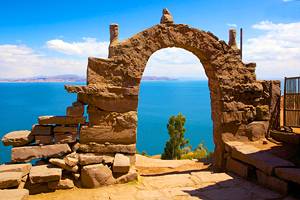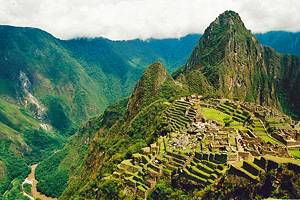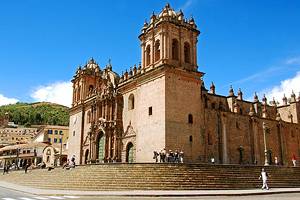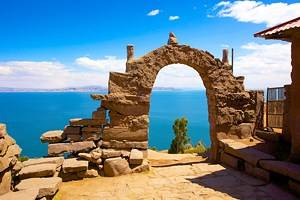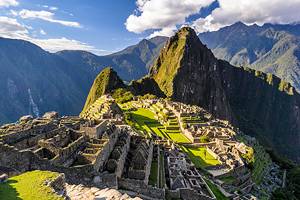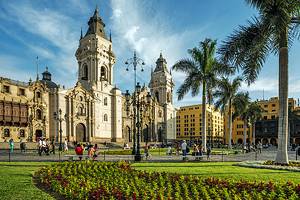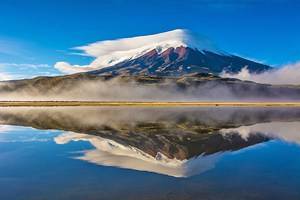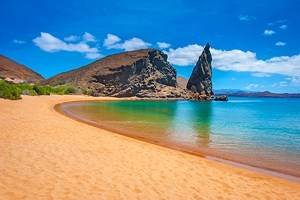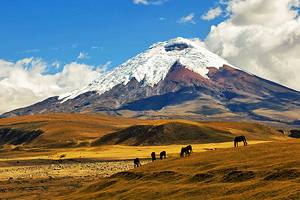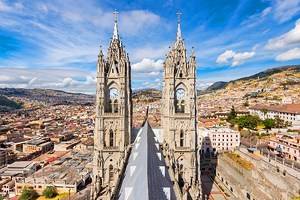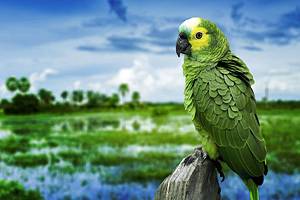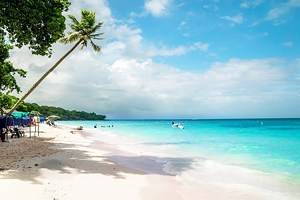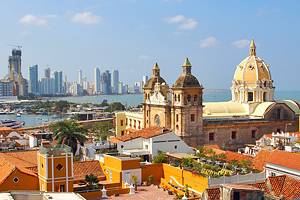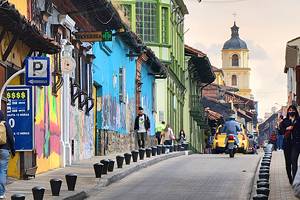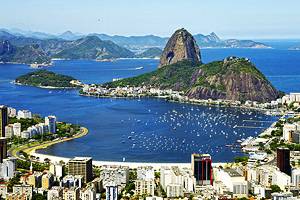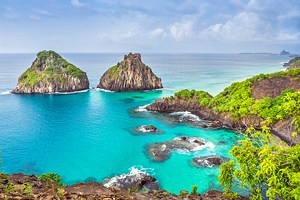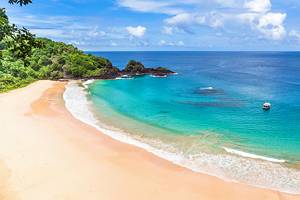Tourist Attractions in the Sacred Valley, Peru
Along with Machu Picchu, the Urubamba Valley — also known as the Sacred Valley or El Valle Sagrado — is one of Peru's major destinations for tourists. Its top attractions can be seen on a day trip, but to appreciate the grandeur and sophistication of the Inca civilization, you should plan at least two days.
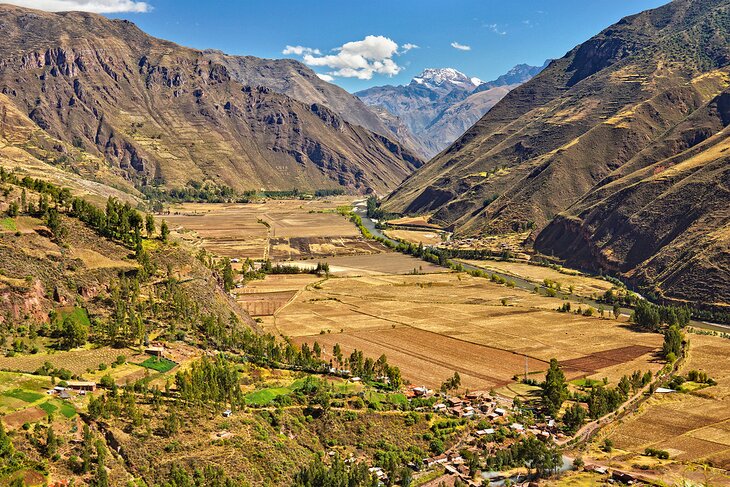
The valley lies north of Cusco and is nearly 609 meters lower in altitude, so many visitors plan to tour it first, while still acclimatizing. This fertile valley once inhabited by the Incas is today home to several typical Andean villages, where you can see locals going about everyday life. If you are there on a market day, the valley towns are also great places to shop for bright local weaving and other handicrafts.
With so many interesting places to visit here, you may not have time for a thorough tour, but be sure to see its major highlights: the ruins at Pisac and Ollantaytambo. From Cusco, it is less than an hour by taxi to Pisac or 90 minutes to Urubamba. You will need a boleto turistico, tourist pass, to enter most of the Inca sites in the Sacred Valley.
To find the best places to visit here, use our list of the top attractions in the Sacred Valley.
Ollantaytambo
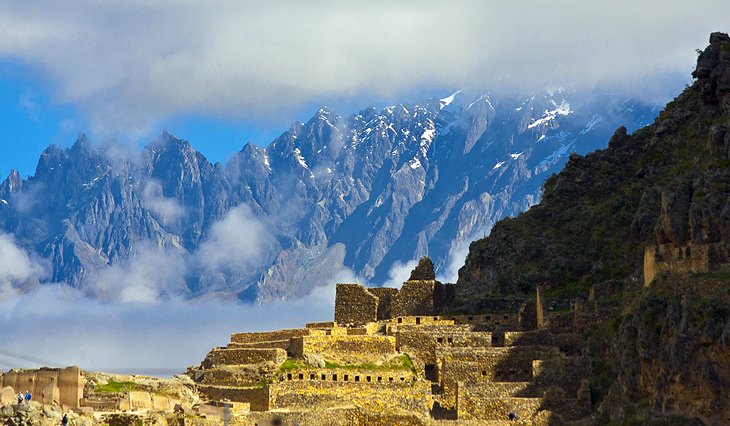
With stone-paved streets, stairways, arches, and atmospheric plazas, Ollantaytambo would be a lovely town to visit even if it were not overlooked by some of the Inca Empire's most impressive remains.
The setting itself is dramatic, as the valley narrows and the mountains draw closer on each side, and the ruined fortress rises in steep terraces directly from the town. Climb through these on the stone stairways to see the intricate stonework, still perfect today.
Ollantaytambo was both a fortress and temple, and you'll come to the temple area immediately above the terracing. The temple remains unfinished, as it was still being built at the time the Spanish conquered the valley.
Pause at the top to marvel at the quarries on the opposite side of the valley, the source of the stones for Ollantaytambo. These stones were transported across the rushing Urubamba by bringing them to the riverbank, then diverting the river's flow to a new channel behind them and moving the stones across the then-dry riverbed. You can visit the quarry on a six-kilometer hike from the Inca Bridge in the village.
Ollantaytambo is a good starting point for traveling to Machu Picchu, one of the world's most impressive World Heritage Sites, as the train trip to Aguas Calientes is shorter and less expensive from here than it is from Cuzco. Taking the train from Ollantaytambo also avoids having to retrace your route back through the Sacred Valley; you can return directly to Cuzco by train.
Read More: Family Adventure Holidays
Pisac Ruins
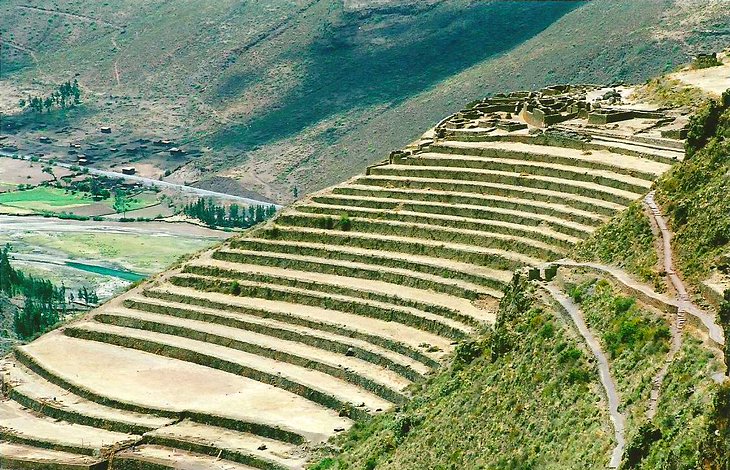
On the hillside high above the town of Pisac, these ruins are among the most important in the Sacred Valley. They are especially famous for their rows of agricultural terraces cut into the mountainside and held in place by stone walls.
The terraces are designed to be cultivated using Inca foot plows. You can see these terraces from the valley floor and across the valley, but this is no substitute for walking the paths above them and exploring the temples and baths of the ceremonial center.
You'll see some of the finest stonework in all of Peru in the walls of these buildings. The setting is stunning, as well as defensible, atop a steep ridge that drops sharply to deep valleys on either side.
Although you can walk up to the site from the town of Pisac, it is quite a hike, so most visitors have a taxi drop them at the top of the ruins and the driver meet them later at a lower parking area.
Moray
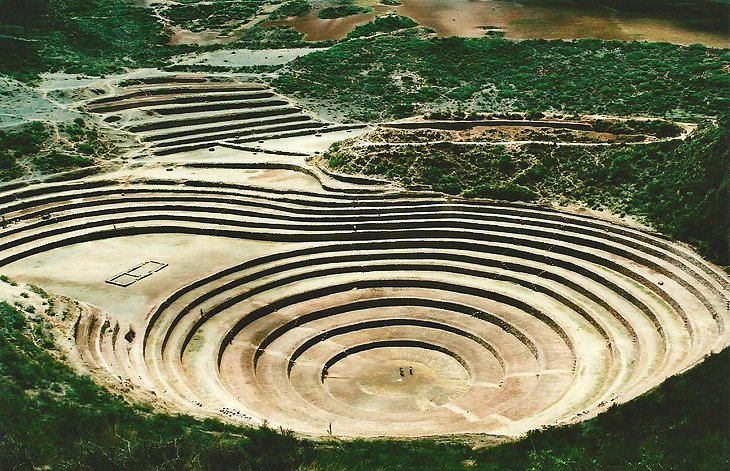
You don't need to be interested in agriculture, or even history, to find the symmetrical circular terraces at Moray fascinating and impressive. The site, which is just outside the village of Moras, at first looks like a giant green amphitheater, a vast bowl formed by layer upon layer of flat terraces.
There are actually two bowls at Moray, but one is much larger and more restored than the other. Stone stairs built into the terrace walls allow you to walk down to the very bottom level. Looking up at the surrounding stone walls and the sky is just as impressive as seeing Moray from above.
Each of the different levels of terracing has its own microclimate, which the Incas are thought to have used for testing the optimal growing conditions for their crops. With this information, the Incas could determine what areas were best for growing various crops, which in turn determined where they should settle.
Moray is not part of the usual Sacred Valley circuit but makes a good half-day trip from Urubamba. Because it is so close to the Salinas, these two sites are usually visited together.
Huchuy Cusco
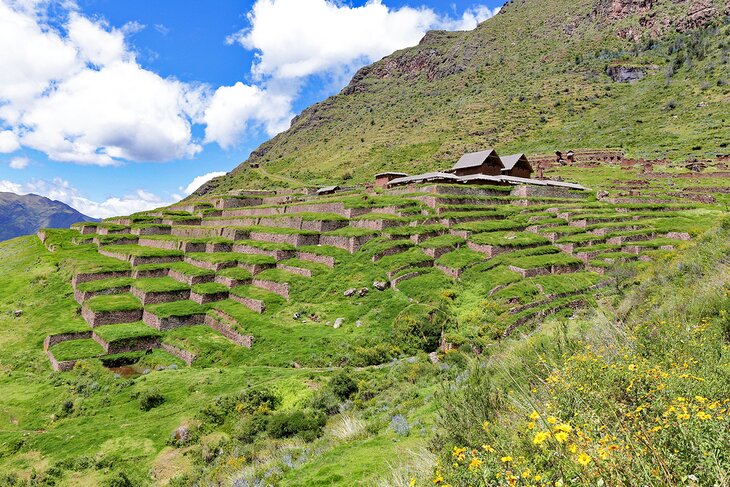
Between the towns of Pisac and Urubamba, near the village of Lamay, the Inca ruin of Huchuy Cusco is considered the third most important Inca site in the Sacred Valley, although one of the least visited.
Its main attraction is a great Inca Hall, known as a kallanka, which measures almost 40 meters long. The two-story building has an adobe top, and outside the hall are Inca terraces, a gate, and some smaller structures. Huchuy Cusco is thought to be the royal palace of Caquia Jaquijahuana, the final home of Viracocha Inca, the exiled eighth ruler of Cusco.
There is a reason why so few tourists see Huchuy Cusco. It is reached by a three-hour hike from the village of Lamay, much of it uphill. But for those who make the effort, it is a memorable sight.
Salinas
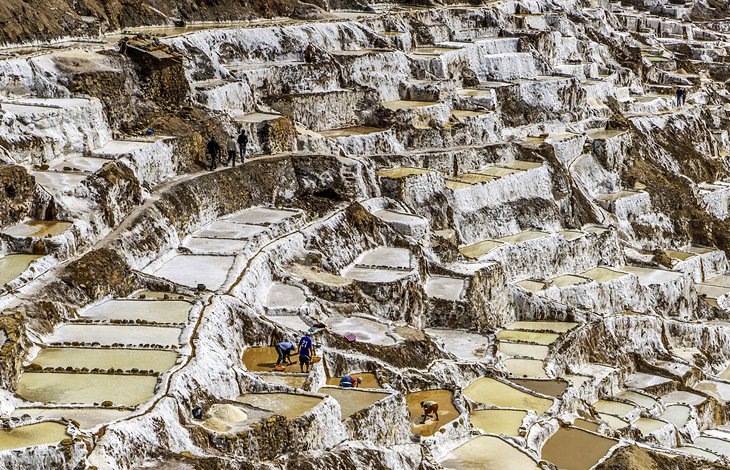
Only a short distance from Moray and easily combined into the same trip, Salinas are salt mines that have been in use since the time of the Incas. One of the most astonishing sights in the entire Sacred Valley is this mountainside lined with 5,740 small pools, called pocitos.
The pools are fed by a saltwater hot spring that the Incas diverted to flow through the salt pans. As the water evaporates, the salt crystallizes and is harvested. Each pool can yield 150 kilos of salt a month, so they formed a tremendous asset for the Incas.
You can reach Salinas by either hiking up to it or approaching it by car from the top on a somewhat tortuous unpaved road that winds its way down the mountainside. A few stopping areas along the way provide great views over the thousands of salt pools, giving some perspective on how huge this site is.
Tambomachay
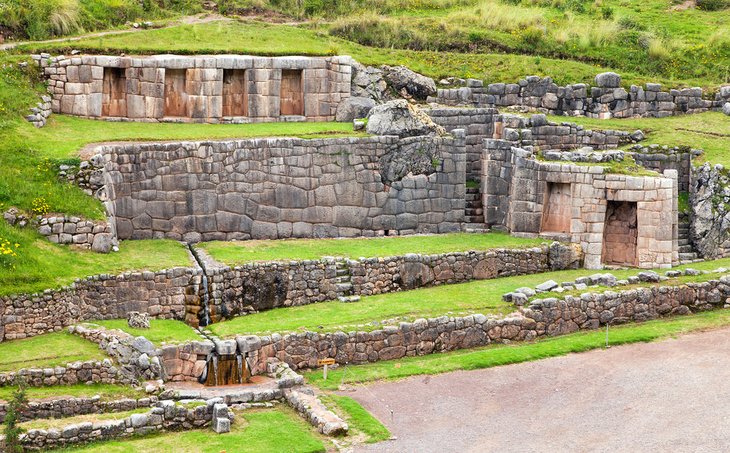
The Inca reverence for water is evident in this archaeological site, also known as the Baños de Inca (Inca Baths). The sophisticated stonework and its unique underground hydraulics make it stand out among the larger valley sites.
The source of the spring, which even today brings a constant flow of fresh, clear water into the well at the top and through the subterranean channels to the lower level, is still unknown.
A series of platforms are held in place by walls of meticulously fitted stones, and water falls to different levels through notches in the stone walls. The upper wall has a series of four niches, and two more are in a lower one. A door opens to a small room, where water seems to spring from the floor.
The site is not large, so gets fewer visitors; this combined with the gently falling water gives it a more serene and contemplative atmosphere than neighboring Sacsayhuaman.
Pisac Market
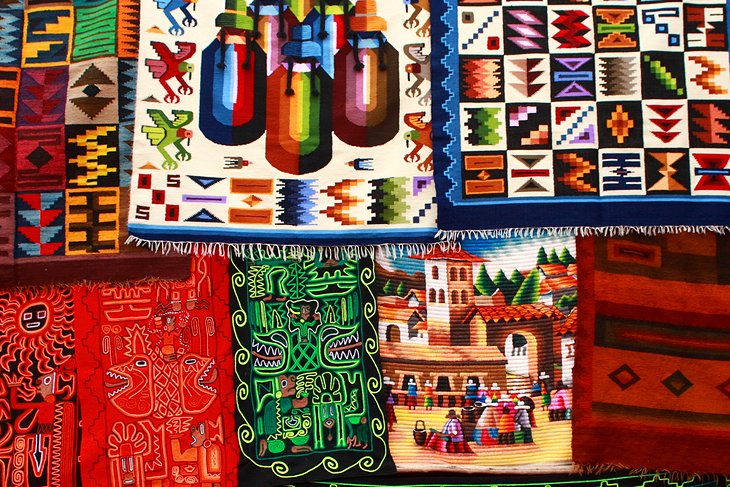
The pleasant little town of Pisac sits on the bank of the Urubamba River, about a 32-kilometer drive from Cusco. Along with its impressive ruins, Pisac is popular for its huge and colorful Sunday market, a good place to shop for local handicrafts.
The market is a constantly moving kaleidoscope of brilliant colors, with stacks of fabric woven in intricate patterns of vividly dyed wools, and Andean villagers are dressed in their traditional clothing. The big day is Sunday, but there are smaller markets on Tuesdays and Thursdays, and usually some sellers on any day.
While you may not find the high quality that you'll find in craft cooperatives in Cusco, you can be sure of a wide selection and lower prices, especially if you are prepared to bargain. The market spreads across the main plaza, where there is a beautiful old church.
You will also see women dressed in their finest, usually with a colorfully dressed child; they are here to pose for photographs and will expect money if you take their picture.
Pisac has lodging and restaurants, and for those with time to spare, it makes a good stopover point.
Chinchero
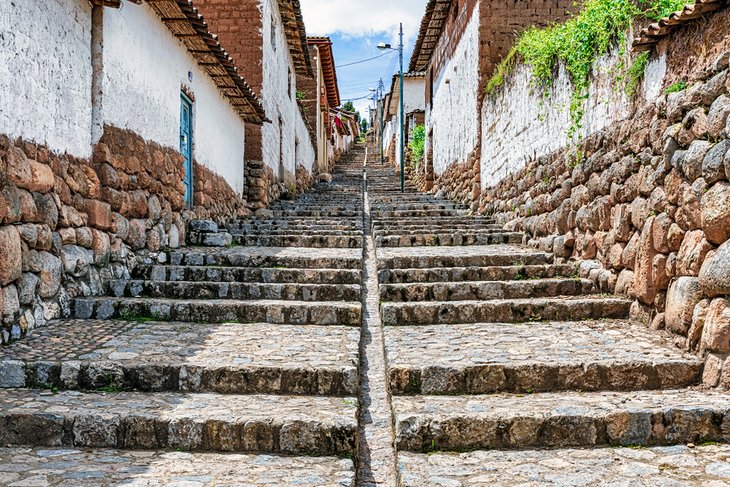
Set much higher than the rest of the Sacred Valley and even higher than Cusco, the small town of Chinchero is at an elevation of 3,800 meters. As you might expect, the views of the surrounding mountains from here are spectacular.
One of the top things to do in Chinchero is to visit the Sunday Market, where you'll find a somewhat more authentic experience than at Pisac, although it also draws large crowds. In the Plaza de Armas is an adobe colonial church built on top of Inca foundations and an Inca wall with 10 trapezoidal niches.
The small museum at the end of the plaza displays a few Inca artifacts. You'll see some Inca terracing in the surrounding area.
Urubamba
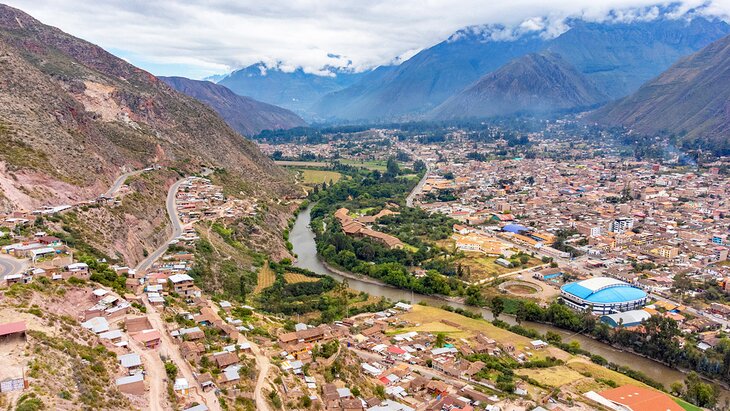
Despite its being one of the largest towns in the Sacred Valley, Urubamba is relatively free of tourists, and life here seems to revolve almost solely around the area's Andean villagers. There is a very local market, and although there may be little here for travelers to buy, it is a good place to see a traditional local market in action.
One attraction merits a stop for anyone interested in fine pottery or in the revival of traditional Inca design and craftsmanship. At Seminario Pottery Studio, close to the market plaza, Pablo Seminario and Marilú Behar have studied pottery techniques and styles from Peru's ancient cultures to create fresh and vibrant ceramic art for modern users and collectors. Their work is exhibited in Chicago's Field Museum and elsewhere, and the studio welcomes visitors.
Urubamba is also a boarding point for the upscale Vistadome train service to Aguas Calientes, at the base of Machu Picchu (although you should book a few days in advance to be sure of seating). It's also a good base for visiting nearby Moray and Salinas.
Visiting the Sacred Valley
Tours from Cuzco: If you are staying in Cuzco and are excited to explore the Sacred Valley but prefer to let the experts take care of the details, we recommend these excellent day tours. Both include hotel pickup and lunch.
Getting Around: If you don't have a rental vehicle, the fastest and most comfortable way to get around is by taxi; however, it's also the most expensive. You can save some money by taking a collectivo (shared taxi), but these aren't good for time-sensitive excursions because the driver will wait for the vehicle to be full. Local buses are the cheapest way to get around, but be prepared to stand if the bus is full.
When to Go: The dry season is between April and October, with November through March bringing the rains. If traveling in the dry season, be sure to bring warm clothing for the chilly evenings.
Altitude: The Sacred Valley sits at an altitude of around 8,000 feet, which means you will need to give your body some time to adjust. The best approach is to give yourself a day in Cuzco to acclimatize before setting out to do any walking or hiking.


